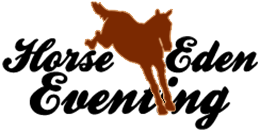| |

Moderator |
From the former user Harlequin Raven:
Okay, I suppose I should do my job as genetics guru.
First, let us go over the basic terms and ideas.
Genes and Alleles
People tend to think use the word "gene" incorrectly. For the sake of ease, I started off this guide using it how it is often used. However, it was bothering me, so I am changing it.
A GENE is a particular section of DNA that codes for a protein. Proteins are what give us the actual visual effect such as a change in coat colour. An ALLELE is a version of the gene. For example, the tobiano gene has two different versions, therefore two different alleles. One allele is solid (no white spots) while the other is the allele for tobiano (white spots).
Inheritance
Think of a bully and a kid who gets picked on. Whenever the bully is around, the weaker kid is going to stay hidden. The only time the weaker kid will come out is when the bully is not around. The bully is the "dominant allele" while the weaker kid is the "recessive gene."
Dominant: This is a gene that is "stronger" than another. It can "hide" other genes. There only needs to be ONE copy of this gene in order to show up. Bay is an example of a dominant colour. Bay is dominant to black.
Recessive: This is a gene that is "weaker" as compared to another. It can "hide" behind other genes. A recessive gene will never show up in the presence of a dominant gene. Remember the bully. A completely recessive gene (one that is weaker than all the others that can be paired with it) can ONLY show up if there are TWO of it. Black is an example of a recessive colour. Black is recessive to bay.
Incomplete Dominance: (AKA Codominance). This is where things get a little trickier. With incompletely dominant genes, they "share" their traits. A good example is snapdragon flowers. A red snapdragon crossed to a while snapdragon will produce a snapdragon with pink flowers. The pink flowers are a combination of the two genes. Neither one is stronger or weaker than the other. A perfect example in horses are the cream genetics. Ccr is cream, whereas ccr is non-cream. A chestnut is ccrccr. A cremello is CcrCcr. A palomino is a combination of the two, so is Ccrccr. A palomino is (more or less) halfway between chestnut and cremello in colouring, perfectly showing how incomplete dominance works.
Other Terms and Ideas
Phenotype: This is the observable traits. If you say, "That horse is 16 hh, is black, and is male," you are describing part of the phenotype.
Genotype: This includes are the actual genes involved, whether their effects are observable or not. If you say, "That horse is a bay carrying chestnut," you are describing part of the genotype.
Chromosome: A single, long (relative to scale) piece of coiled DNA that contains many different genes. Normally, chromosomes come in pairs. Horses have 32 pairs of chromosomes, or 64 total chromosomes. Rarely an organism will have an extra chromosome, but it usually results in some sort of genetic defect such as Down's Syndrome in humans or infertility in male calico cats.
Locus: (Plural "Loci"). A locus is a fixed position on the chromosome. This describes what we normally think of as a "set" of colours. For example, Ccr and ccr are both on the "C Locus". There are two "slots" per locus (remember, chromosomes come in pairs, so each one has a "slot" to fill on that fixed position). One slot is filled with a gene inherited from the sire, and the other is filled with a gene inherited from the dam. This is why normal horses can never have more than TWO genes on a particular locus. Generally speaking, you could not have a horse that is Ccrccrccr, for example. |
|  |
|
| |

Moderator |
Now I am going to talk about individual colour loci and alleles.
If there is a space left after or before an allele, it means that any of the allele in that particular locus could be in that spot. For example, if you have a bay horse, you might not know if it carries black or not. So you would write it out A_.
Base Colours
A Locus - "Agouti"
The term "agouti" actually refers to a South American rodent. The term is often applied to the main dominant or "wild" colour of a species. Agouti in cats is tabby, agouti in horses is bay.
A - Agouti: Bay
a - Non-Agouti: Black
A is dominant to a. A true black horse (or any 'aa' genotype horse) can never produce a bay when bred to another 'aa' genotype horse. However, a bay (or any 'A_' genotype horse) can produce blacks (or another 'aa' genotype colour).
Examples of agouti colours: Bay, buckskin, perlino, brown, bay roan (sometimes called purple roan), bay dun.
Examples of non-agouti colours: Black, smokey black, smokey creme, blue roan, grullo.
E Locus - "Extension"
The term "extension" actually refers to whether or not the allele allows black to "extend" across the coat.
E - Extension: Black
a - Non-Extension: Red
E is dominant to e. A true chestnut horse (or any 'ee' genotype horse) can never produce a black when bred to another 'ee' genotype horse. However, a black (or any 'E_' genotype horse) can produce chestnuts (or another 'e' genotype colour).
Examples of extension colours: Bay, buckskin, perlino, brown, bay roan (sometimes called purple roan), bay dun, black, smokey black, smokey creme, blue roan, grullo.
Examples of non-extension colours: Chestnut, palomino, cremello, strawberry roan, strawberry dun.
Dilute Colours
Dilute alleles are alleles that reduce the amount of pigmentation that is allowed to show.
Ccr Locus - "Cream"
As was mentioned before, this locus shows incomplete dominance.
Ccr - Creme
C - Non-cream
Ccr and C are incompletely dominant or codominant. They "share" their traits. A horse that is CcrCcr will be a double dilute and will be very pale with blue eyes. A horse that is CC will be normal and will not be diluted at all. A horse that is CcrC will be approximately halfway in between.
Examples of double cream: Cremello, perlino, smokey cream.
Examples of single cream: Palomino, buckskin, smokey black.
Examples of non-cream: Chestnut, bay, black.
Ch Locus - "Champagne"
I have no idea why they refer to it as "champagne," other than maybe because champagne is a light colour.
You will have to bear with me a little on how I "show" the alleles, as different places refer to them differently. I will use the fairly standard upper case means dominant, lower case means recessive.
Ch - Champagne
ch - Non-Champagne
Ch is dominant to ch. A non champagne horse (chch) can never produce a champagne when bred to another non-champagne horse. However, a champagne can produce non-champagnes.
Examples of non-champagne colours: Everything BUT champagnes.
Examples of champagne colours: Classic champagne (black + champagne), sable champagne (seal brown + champagne), amber champagne (bay + champagne), gold champagne (chestnut + champagne).
D Locus - "Dun"
Dun horses almost always have a dorsal (back) stripe. Sometimes (especially in dilutes), the dorsal stripe can be very hard to see. They often have zebra-like stripes on the legs, but this is not always the case.
D - Dun
d - Non-dun
D is dominant to d. A true non-dun horse (dd) can never produce a dun when bred to another non-dun horse. However, a dun can produce non-duns.
Examples of dun colours: Dun (AKA bay dun or zebra dun), red dun, grullo/grulla
Examples of non-dun colours: Everything else! Be careful, in real life, bay-based horses sometimes have countershading on the back that can resemble a dorsal stripe!
Prl Locus - "Pearl"
Pearl practically needs an entire explanation by itself. It is the first allele I will be discussing that has to be in combination with another allele or set of alleles to show up. First things first...
Prl - Non-pearl
prl - Pearl
Pearl will ONLY show up in combination with either 'ee' (non-extension) or creme alleles. Examples:
Apricot: Chestnut with two pearl alleles (ee prlprl)
Apricot Dun: Strawberry dun with two pearl alleles (ee prlprl D_)
Apricot Roan: Strawberry roan with two pearl alleles (ee prlprl R_)
Pearl can also show up in a heterozygous form (one pearl allele) IF it is in combination with a creme allele. CcrC Prlprl is what that would look like. There is speculation that the pearl allele is actually on the creme locus with Ccr and C because of the way it works with it. For example, if you have a buckskin with one pearl allele, it will highly resemble a perlino. A palomino with one pearl allele will look like a cremello, etc. For the sake of the game, we will just assume that it is NOT on the same locus, so you could have a horse that is both ccrccr and prlprl.
Other Colours
ZLocus - "Silver"
Silver is another allele that must be in combination with a different allele to show up. Silver can only show up on full extension colours (black colours 'EE' or 'Ee'). Silver works on the black pigment in the coat, so if there is no black pigment to work on (as in chestnuts), it simply can have no effect.
Z - Silver
z - Non-Silver
Z is dominant to z. A non-silver horse (zz) can never produce a silver when bred to another non-silver horse. However, a slver can produce non-silvers. |
|  |
|
| |

Moderator |
Next I will be going over patterns.
Paint Patterns
These alleles work by disrupting the "flow" of pigment cells to certain areas. Each allele has a different way it disrupts the "flow," which is what results in the various patterns typical to each. For example, as the pigment cells of a splash white are replicating and spreading across the developing embryo, the splash white allele tells them to stop replicating as they get toward the legs and face. In general, pigment cells (and well, all of the cells) start along the neural crest line (top of the head and spine) and spread out from there. This is why many animals with spotting alleles are most likely to have white at areas furthest from the neural crest (tail tip, feet and lower legs, belly, and chin/underside of the face). If you are unfamiliar with paint patterns, I suggest looking over what they look like and the forms they can take.
To Locus - "Tobiano"
A personal favourite of mine, this allele actually has the opposite effect of most white spotting alleles. The areas around the neural crest are very likely to be white rather than pigmented. Though it does still generally leave pigment off of the lower legs.
To - Tobiano
to - Non-Tobiano
'To' is incompletely dominant* to 'to'. Like 'Ccr' and 'C, the alleles "share" their traits. However, it is not as obvious as with the creme gene.
ToTo: Homozygous Tobiano. These horses have ink spots or paw print markings of colour surrounded by white. (see the link above).
* Many say it is simply dominant, but by the general definition of "incompletely dominant"--which is a gene that looks different in the homozygous form than in the heterozygous form--it fits.
SB1 - "Sabino"
I am only going to refer to the Sabino 1 allele because it is the one that there is a test for, even though there is more than one way to get what we typically think of as a sabino patterned horse (for example, Sabino Clydesdales and Arabians have thus far all tested negative for SB1) . Sabino 1 is a very tricky allele, not due to its actual nature, but due to what people are used to. A lot of what people just think of as normal white markings are actually the result of the Sabino 1 allele! Socks and blazes, far from being just normal white markings, are often caused by Sabino 1 or one of the other speculated sabino complex alleles! Like tobiano, SB1 is incompletely dominant.
Sb - Sabino
sb - Non-Sabino
SbSb: A mostly or "all" white horse. I say it like that because sabino whites usually have at least a little bit of roaned colour, which is often not easily visible until the horse is wet or until the horse gets older.
Sbsb: Some white, some colour. What people normally think of as sabino.
sbsb: Non-sabino.
O Locus - "Lethal White Overo (LWO)"
Commonly referred to as Frame Overo, this allele is both beautiful and deadly. Like the others before it, LWO is incompletely dominant.
O: LWO
o: Non-LWO
OO: Lethal White foal. The all white foal will die.
Oo: Frame Overo. Some colour, some white. (Please note that not all Oo horses show the typical picture frame marking that gives frame overo its name, but all will have white surrounded by colour.)
oo: Non-LWO. The horse will be fully coloured (unless there is a different paint pattern involved).
Spl Locus - "Splash White"
While all overo patterns show disruption in the migration of pigment cells from the neural crest, splash white is practically a poster child for this disruption. The top of the horse is coloured while the underside looks like it was dipped in paint. Splash white is very likely an incompletely dominant allele, like the rest of the overo patterns, but this is not confirmed. There is theory that it is lethal in the homozygous state, like frame overo is, but there is no proof to this as of yet.
Spl: Splash White
spl: Non-Splash White
SplSpl: Loudly marked Splash Whites...the typical Splash Whites.
Splspl: Minimally marked Splash Whites, which may make it look like the horse just has a bald face.
splspl: Non-Splash White.
Other Patterns
Rb Locus - "Rabicano"
While not actually mapped yet, rabicano is thought to be either dominant or at least incompletely dominant.
Rb - Rabicano
rb - Non-Rabicano
Grey
Greys are born dark (i.e. they are born looking like their base colour of bay, black, palomino, chestnut, or whatever they are without the grey) and lighten with age as the coloured hairs are replaced with white hairs. This is why grey horses always have a dark skin under their white coat. They typically progress from fully coloured to iron or rose grey (mostly dark with intermingling of white hairs similar to roan) to either dapple grey or further "roaning" to either "white" or fleabitten grey. Grey is completely dominant. A horse with one or two grey alleles will be grey.
G - Grey
g - Non-Grey
Rn Locus - "Roan"
Unlike greys, roans are born roan, though it may be hard to tell on the foal coat. The head and legs stay the base colour, while the rest of the body is a mixture of white and coloured hairs. Roan is a completely dominant allele.
Rn - Roan
rn - Non-roan
W Locus - "White (Dominant White")
While not confirmed, White is thought to be lethal in the homozygous state. No homozygous dominant white horses have been found, so it is thought that it effects the embryo. Interestingly enough, there are multiple variants of dominant white, but for the sake of the game (and simplicity) I will carry on just assuming we are dealing with a single variant! White horses always have a pink skin under their white coat.
W - White
w - Non-White
WW: Non-viable embryo.
Ww: White
ww: Non-white
Lp Locus - "Appaloosa
This is a complex set of alleles, and since it is late (and I am tired), I will work on it later!
Chimerism - "Brindle"
Brindle is not an actual gene. Rather, it is the result of two embryos of different colours fusing together in the womb. This gives the horse TWO different genotypes! In some cases, it can really throw off paternity and maternity tests (more so in humans where the effect is usually less noticeable than in horses) because the cells that are taken for the test may have different DNA than the sperm or egg that resulted in the offspring. While chimerism is not a specific gene, like with twins in humans, certain individuals are more likely to produce chimeric offspring. Chimeric individuals are most likely to produce chimeric offspring. I am not sure if this is the case in HEE, but that is the case in real life.
Brindle can be ANY combination of two different coat colours that can be produced by the parents because it is the result of two entirely different individuals. For example, if the mare was carrying both a chestnut embryo and a black embryo that fused, the resulting foal would have stripes of chestnut and stripes of black. A mare who was double creme (such as cremello) could only produce creme foals, but they might be different creme colours. For example, if you bred a cremello to a bay carrying chestnut a resulting chimeric foal could have stripes of palomino and stripes of buckskin. Of course, this would be much harder to see than black and chestnut, but it would make for some interesting marks in the dark points of the mane, tail, legs, and face!
X-: Non-chimeric, not brindle.
X+: Chimeric, brindle. |
|  |
|
| |

Moderator |
Finally, I will get in deep and dirty with the more technical aspects of genetics! This is for people who just want to learn more than just what to pair to get what. It is not at all necessary for breeding in Horse Eden, but I figured some people would love to learn it, anyway!
Vocab:
Melanin: Pigment found in higher life forms (plants and animals) as well as protists. So basically things in the Domain Eukarya. It is formed from tyrosine (an amino acid).
Eumelanin: Black/brown pigment. e.g. The black points on the face, ears, legs, tail, and muzzle of a bay are caused by eumelanin bunching up in that area.
Phaeomelanin: Red/yellow pigment. e.g. The red body colour of a bay is caused by phaeomelanin bunching up in that area.
----------------------
Concepts
Some genes affect both eumelanin and phaeomelanin, while others only affect one or the other.
A: Agouti - Splits the eumelanin up onto different hairs, so eumelanin is in the points and phaeomelanin is on the body. In other animals, it causes the pigments to form bands, causing a ticked appearance. Here is a picture (no laughing at me as a kid!) of the effect in rabbits. The layer closest to the skin is formed of eumelanin so it is a blue-black colour, the middle band is phaeomelanin so it is a red-orange colour, and the top band (just at the very tip, allowing some of the orange from below to peak through) is eumelanin again so it is blackish.
* Interestingly enough, the pigment at the top of the hair shaft was the band that was laid down first! It gets laid down kind of in a chain assembly line. The part closest to popping out of the skin gets pigment first, and as the hair moves up, each section goes into the "pigmenting zone."
a: Self - Keeps the eumelanin and the phaeomelanin all mixed up in all of the hair shafts, giving a singular tone. Black is a perfect example of this. Since black pigment is darker than red pigment, the overall affect is that of a black horse. However, if you removed the red pigment, it would appear like a faded black. In rabbits, this is quite common, but in horses there is no known gene that removes the phaeomelanin.
E: Extension: This gene works entirely on the eumelanin and allows it to extend out into the hair shaft. You can see black pigment have its normal affect.
e: Non-Extension: Eumelanin is partially or totally restricted, leaving only phaeomelanin. In rabbits, you have to breed carefully for full restriction of the colour to allow the bright orange to shine through. Otherwise, it kind of muddies the colour. It makes me wonder if liver chestnuts might be chestnuts that did not fully get the eumelanin restricted, but I am not sure if that theory has already been tested by checking what pigment is in the hair shaft. LOL.
Cr: Cream - Cream works on both pigment types. It reduces the TOTAL amount of pigment in the hair shaft. It does this by limiting the tyrosine, which limits the melanin. Since eumelanin and phaeomelanin are both types of melanin, it limits both!
cr: Non-Cream: No pigment restriction.
Crcr: Since this gene is incompletely dominant, a Crcr horse has more total pigmentation than a CrCr horse. If Cr reduces pigment by 50%, CrCr would reduce THAT by another 50%. So the result would be a horse with only 25% pigment. Now, I am not sure exactly how much it reduces it, but 50% is a nice, easy number to use.
In a double does, it also removes the majourity of the pigment from the eyes, leaving blue eyes. This is an indicator of partial albinism. Many species have a lot more genes that work on the C locus than horses do. Albino animals have a complete lack of tyrosine production, meaning they have no melanin and no pigment anywhere. The red eyes are simply the red from the blood vessels! If you see an animal with bright blue (like sapphires), red eyes, or a reddish cast to the eyes, you can bet that some gene is restricting some level of total tyrosine production!
D: Dun - The dun gene is a very interesting gene. It appears to dilute pigment in only SOME areas of the body, while leaving others at full (or at least nearly full) strength. If you take a standard bay and pop dun on it, the effect of the body colour is remarkably similar to the effect of cream on bay. This is why so many people get buckskin and dun confused. However, dun does NOT dilute (or at least does not fully dilute) the areas where the primitive markings are found. The zebra-like leg bars, the dorsal stripe, etc. are not diluted like the rest of the body.
d: Non-Dun - Nothing is diluted.
R: Roan - Roan is fun! It takes certain hairs and essentially wipes out ALL melanin in them, leaving just white. It leaves other hairs with however much of each type of pigment they would normally have. The result is the salt-and-pepper appearance that we call roan!
r: Non-Roan - Normal pigmentation.
Ch: Champagne: This is another gene that reduces both types of pigment. I am not as familiar with it, so that is all I can really say on the matter. I cannot think of any other species that has a similar gene.
ch: Non-Champagne: No pigment reduction.
Prl: Non-Pearl: No pigment reduction.
prl: Pearl: Like the cream gene, it works on both types of pigment. There is speculation that the prl gene is actually on the same locus as the cream dilution gene, since it interacts with the cream gene to form double dilutes.
Z: Non-Silver: No pigment reduction.
z: Silver: This gene works ONLY on eumelanin. It reduces the amount of eumelanin in the coat, especially in the mane and tail. However, if you take a look at silvers, many will have a more brownish cast (less eumelanin allows more phaeomelanin to show). Many also have dapples where the production of eumelanin is very weak. Because it only works on eumelanin, horses without any eumelanin in the coat (chestnuts, palominos, cremellos, red dun, etc.) are not affected.
Phew! That took a long time, so I will work on the pigment distribution in patterns later! |
|  |
|
| |
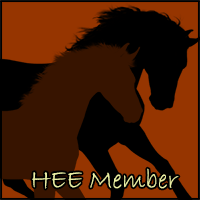 |
HOLY CRAP THANK YOU!
If it's alright with you, I copied and pasted all this info onto a Word Document so I could study later!
Thanks again!
|
|
|
| |
 |
o.o Woah,that looks confusing from a glance xD
|
|
|
| |
 |
Thank you. So much clearer now.
|
|
|
| |
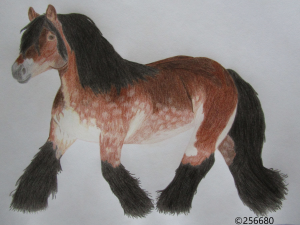
|
I love the lengthy explanation, it's exactly what I'm looking for. Trying to figure out the genetics of my top stallion. |
|  |
|
| |
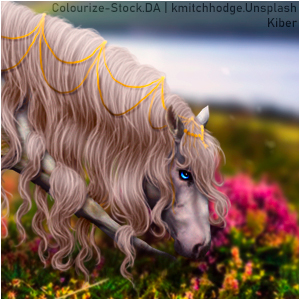
|
Thank you so much for posting this, Kuewi! I had a quiz on horse genetics the other day, and because of this guide, was able to answer almost every one right!
|
|
|
| |
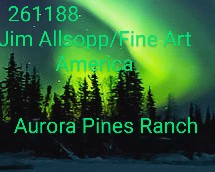
|
what geno is best to produce amber dun? |
|
|
